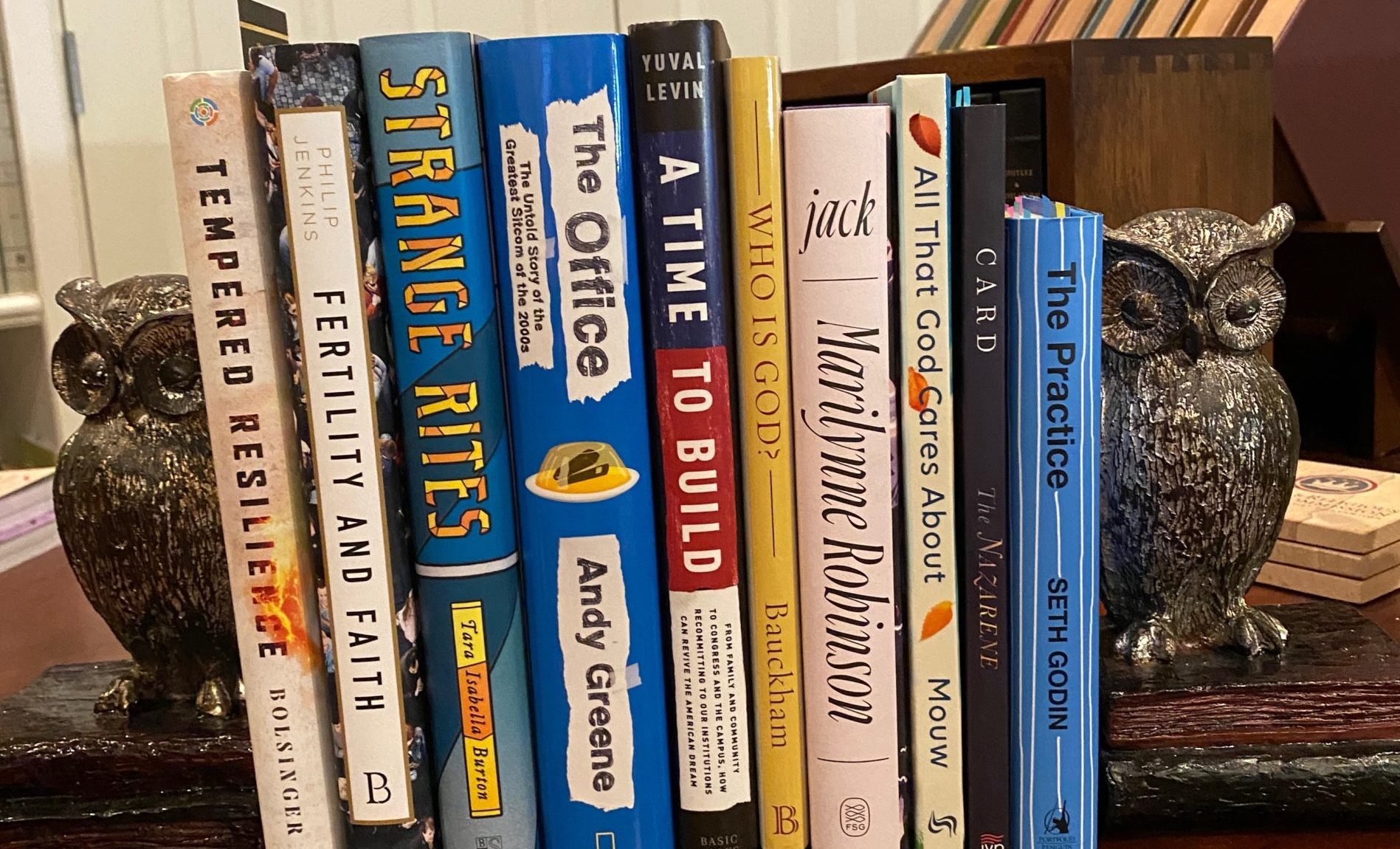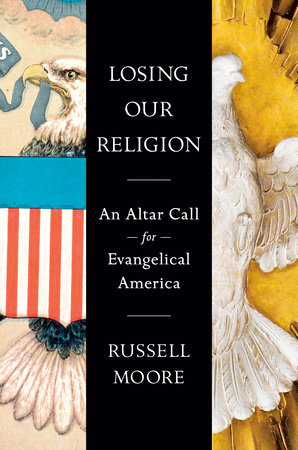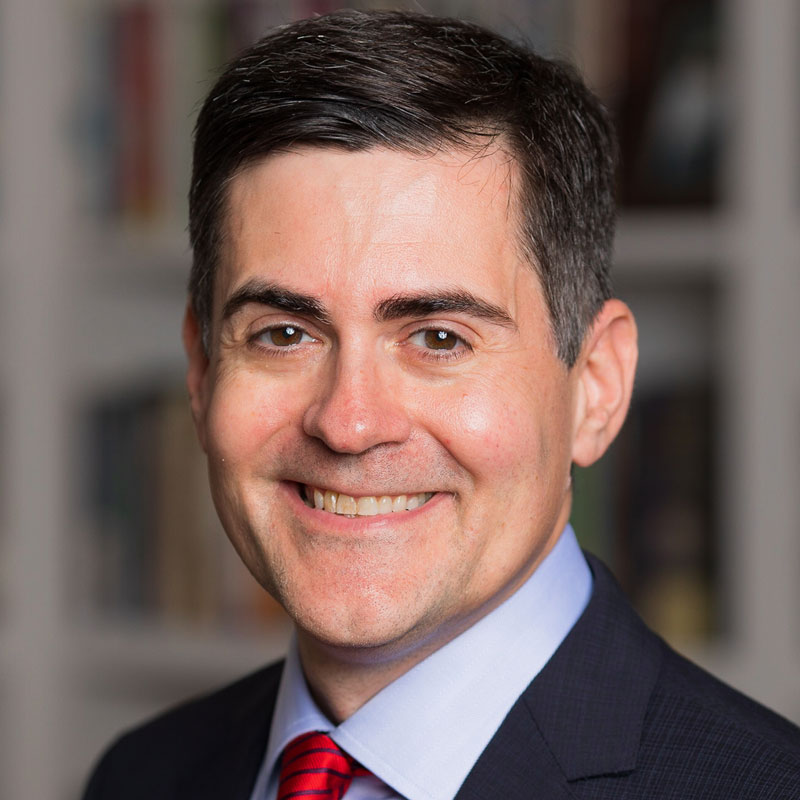Each December, I come to this task with both joy and anxiety. As you know, I love books, and am enlivened by writing and talking about books. At the same time, I cannot remember what all I have read this year, and am afraid that I am will wake up a week from now and think to myself, “You buffoon! How could you have forgotten…”
And yet, as Seth Godin would say, that is my subconscious trying to subvert me with perfection. I should tell it, as Ryan Howard said in proposing to Kelly Kapoor: “I don’t know how I’m gonna feel tomorrow or the next day or the day after that, but I do know that right here, right now, all I can think about is spending the rest of my life with her. Again, that could change.” That’s not a good attitude toward marriage, but it is toward my end-of-the-year lists.
These are in no particular order except how I found them on the shelf right now (RDM’s subconscious: “Or are they?”).
Marilynne Robinson, Jack (Farrar, Straus, & Giroux)
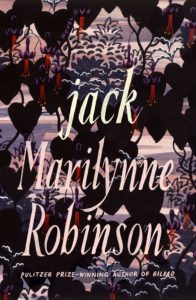
Until and unless Marilynne Robinson writes a textbook on trigonometry or a manifesto on the artistic inferiority of Johnny Cash, I will read everything she writes. And I have long waited for this latest volume in her Gilead series. These novels (and you should read every one of them) can’t really be described as “sequels” or “prequels” to one another. They describe more or less the same time periods, sometimes the very same events, but from the strikingly different points of view of various figures enmeshed in each other’s lives mid-century in the fictional town of Gilead, Iowa.
This book is different, as it takes the reader out of rural Iowa and follows the “prodigal son” of one of the preachers into his new life in the city. There he meets and falls in love with an African-American woman, also a preacher’s child, in a time when such love meant exile and disapproval from almost everywhere. Reading the book, you find yourself bound up in the stories, and in the characters’ spoken and unspoken internal dialogues, but end up realizing that you have been meditating on such big themes as love, fidelity, regret, and, as always in Robinson, a theology of creation, fall, redemption, and meaning..
Here is the last line of the book, which will in no way spoil the story for you:
“The knowledge of good. That half of the primal catastrophe received too little attention. Guilt and grace met together in the phrase despite all that. He could think of himself as a thief sneaking off with an inestimable wealth of meaning and trust, all of it offended and damaged beyond use, except to remind him of the nature of the crime. Or he could consider the sweet marriage that made her a conspirator with him in it, the loyalty that always restored them both, just like grace.”
Seth Godin, The Practice: Shipping Creative Work (Penguin)
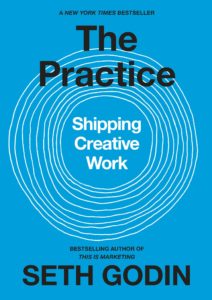
Very few people have influenced my views on how change happens and how work should be done more than Seth Godin. One of the many things I have learned from him is how one can avoid doing work that matters out of fear of criticism or out of waiting for “inspiration” to strike. This is not just a failure of productivity, Godin argues, but a failure of generosity, a hoarding of one’s gifts and a hiding due to fear. Instead, Godin says, we don’t wait to feel inspired to do the work, we determine to “ship” our work—and that is how we get into the “flow” of creating something that matters.
Not everyone will like what you do. Godin points often to one-star reviews of Moby Dick or Anna Karenina on Amazon. Trying to create work for everybody—rather than for the “smallest viable audience” means one really has nothing to offer—just another iteration of the status quo.
This is a little book—and yet it took me much longer to read than some of the 400 pound volumes on this list. That’s not because I was bored—far from it—but because I would shut the book, and ponder, before returning to it again.
And the metaphors—one can almost feel new neural pathways forming as a result of some of these metaphors and analogies. Here’s one:
“It’s likely that you’ll never be a contestant on Jeopardy! But if you are, here’s the secret to doing well: You need to press the buzzer before you know the answer (but not before you realize that you have a process for getting to the answer). Once you realize that you’re the kind of person who can find the answer, once you know that you probably know the answer: buzz. Then, by the time Alex calls on you, you’ll have something to say. Too often, we wait until we’re sure we’re right. Better to begin with an assertion. And then find out.”
Richard J. Mouw, All That God Cares About: Common Grace and Divine Delight (Brazos)
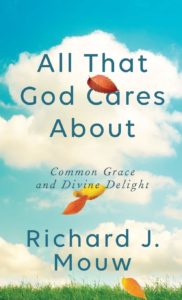
This is another little book, and is written also by someone on my “Unless it’s trigonometry list”—theologian Richard Mouw. Sometime I will tell you about the personal conversations I have had with Mouw that changed the entire trajectory of my life—including one when we were lost on the streets of a big city, trying to find our way to a restaurant. But, in the meantime, I will tell you, if you’re not familiar with Mouw, that one of the key emphases of his writing has been the Kuyperian views of common grace and the antithesis.
The first emphasizes the biblical teaching on creation; the second emphasizes the biblical teaching on the Fall. If we emphasize either to the neglect of the other, we can end up distorting the biblical message. This book is a series of reflections on common grace—how we can see God’s handiwork, often in the work or art or thought of those who don’t (or don’t yet) know him.
Dr. Mouw always causes me to stop and think, “I’ve never in my life even thought about that.” In this volume, one of those moments was his thought about how the fragmentation of modern life relates to the Antichrist. If you subscribe to my newsletter, you will see how this line of thought prompted all sorts of ideas in me.
Reading Richard Mouw is not the same as getting lost in the streets with him, listening for an hour as he speaks on Bible and theology and personal devotion to Christ and so on, but it’s close enough. Unlike on our walks, in his books, Mouw knows where he is going. But, just as on the walks, I’m always sad when the journey is over.
Richard Bauckham, Who Is God? Key Moments of Biblical Revelation (Baker)
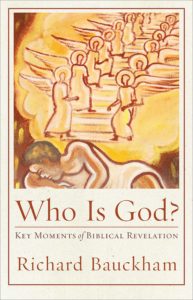
This is another short book, just over a hundred pages, but another that sparked my imagination for months now. Some of my interaction with this book showed up in the newsletter over the past year. Here are just a few things that stood out. Bauckham explains better than anyone I have heard or read the significance of the Spirit’s presence “as a dove” at Jesus’ baptism, tying this with the dove sent out from the Ark in the Noah account. I also exulted in his treatment of one of my favorite passages of Scripture, the Prologue of John.
But, by far, the most brilliant part of this book for me was Bauckham’s discussion of the Genesis account of Jacob’s ladder, which Bauckham argues is a pivotal passage of Scripture and also isn’t really about a ladder at all.
What’s remarkable about Jacob’s dream, Bauckham argues, is that “he sees God not, as one would expect, at the top of the stairway but at the bottom.” The angels—all along the staircase—represent, as they do throughout the canon, mediated communication between heaven and earth, but, in this unveiling, God bypassed them—and is there, himself, with Jacob, at the bottom of the staircase.
This is why Jacob, on awakening, names the place “Bethel” because “This is none other than the house of God, and this is the gate of heaven” (Gen. 28:17). The point of the dream, though, for Bauckham, is even more primal than that: “What he has discovered is not so much that God is in that particular place as much as that God is where Jacob is. God is with Jacob and will be with him wherever he goes: ‘Know that I am with you and will keep you wherever you go’ (28:15).” The point is that, “From now on every place where Jacob sleeps will be a Bethel,” because God will be present with Jacob, everywhere and all the time.
For whatever reason, I needed that word, right then when I read it. This book is one I will return to in the future.
Yuval Levin, A Time to Build: From Family and Community to Congress and the Campus, How Recommitting to Our Institutions Can Revive the American Dream (Basic)
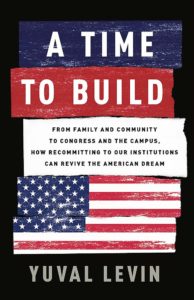
Institutions have fallen on hard times in recent years. Some of this is the result of alleged “populisms” of the Left or Right purporting to speak for “the people” against the “rigged system.” And some of it is because so many institutions are failing—showing themselves to lack credibility in ways ranging from corporate scandals at Wall Street banks to the horrifying sexual abuse and other scandals in too many church communions to count.
In this book, though, Yuval Levin demonstrates what we are losing when we lose institutions as a “mode that shape people’s characters and habits.” Along the way, he diagnoses what happens when we lose “serendipity”—the ability to be surprised by new ideas.
As I read this book, I could not help but think of what has been lost in terms of the church. When I was a child, I needed the church—and I mean my church, where I was multiple times each week, not the generic category of “the church”—not just as a relational place of belonging—although I needed that too—but as an institution. My congregation was “low church” and would not have thought they recognized any sort of ritual or liturgy or church calendar, but they did. The familiar patterns of even the “lowest church” of liturgies—offertory prayers and invitation hymns—and calendars—Vacation Bible School and Spring and Fall revivals—helped tell me who I was, and helped teach me my obligations. Much has been gained since that time—I don’t want to go back—but we should recognize what has been lost also.
This book—by one of the smartest people I know—is written with an irenic spirit and a “Come, look at this” tone, while showing the way toward healthy and credible institutions in a world full of “platforms” and “networks” and “connectivity.”
Andy Greene, The Office: The Untold Story of the Greatest Sitcom of the 2000s, an Oral History (Dutton)
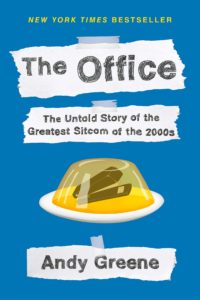
A friend—knowing my thorough familiarity with the American version of the television series The Office—described to me a situation in her life that was cringe-inducing in its awkwardness. The best way she could describe it was: “It was somewhere between ‘Scott’s Tots’ and ‘The Dinner Party.’” I knew just what she meant. So I was intrigued by this oral history of the show, built from extensive interviews with the cast and crew of the show.
The book explores why the original British version of The Office, with its hyper-cynical tone, would never work in an American context, and how the character of Michael Scott evolved. He had to be cringe-inducing, but he couldn’t be evil. He had to be an exaggerated but relatable version both of human weakness (the neediness for love) and human goodness. In short, it had to reflect something of an Augustinian view of the person. He had to be a good guy, who occasionally ran over an employee with his car.
The book also explores the ubiquitous second-life of The Office, which is watched—for many on a continuous loop—by Generation Z-ers who were not around for the show’s broadcast, but seem to find comfort in the stable rhythms of an office job and “the magic world where it’s always 2003.”
Two of the best parts of the book for me were the discussions of the characters of Dwight Schrute and Creed Bratton. The writers and producers mulled over who would take over as Dunder-Mifflin regional manager after Steve Carrell left. They considered Dwight, but decided “he wouldn’t be funny anymore with power.”
“It’s funny if he sets the office on fire and blowtorches all the doorknobs. But if he did that all day long without any sort of check on his behavior, it would be terrifying. “
Therein is a parable.
Many people wish they could have more episodes featuring a bigger role for Creed, but Creed disagrees. “Creed is best in small bits,” the (real) Creed Bratton says. And he also rejects it when people call him a “national treasure,” arguing that he’s more of a “national trinket.”
Lots of inside drama is here—as in any workplace—and one comes away from this book seeing what a good man Steve Carrell seems to be, and that James Spader is kind of high maintenance. But, above all, the book reminds us of what it argues was the meaning of the whole series: “It’s finding beauty in the small things in this office in Scranton, Pennsylvania, with very few windows.”
Therein, too, is a parable.
Tara Isabella Burton, Strange Rites: New Religions for a Godless World (PublicAffairs)
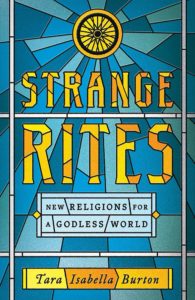
“I’ve been a member of several cults, both as a follower and as a leader,” said Creed Bratton. “You have more fun as a follower, but there’s more money as a leader.” Growing up in a 1980s-era Southern Baptist church, lots of Training Union and Discipleship Training and Wednesday night Bible study time was spent on equipping us to “confront cults,” such as Jehovah’s Witnesses, the Unification Church, and satanic covens. I remember thinking, “Wonder if somewhere out there are other kids on metal folding chairs learning how to confront us?” (Narrator: There were.)
I doubt much of that goes on today since the primary challenge people perceive to their children’s faith now is not signing up with the Hare Krishnas, but dwindling into secularism. This intriguing study of new religious movements, though, argues that it might just be both.
“While more and more Americans are saying that they don’t believe an organized religion, that doesn’t necessarily mean that they aren’t spiritual—or even that they don’t believe in a Judeo-Christian God…In other words, our Nones might not be traditionally religious, in the sense that either Jerry Falwell or Sam Harris is used to. But they’re not exactly secular, either.”
Burton, building on the work of sociologists of the past such as Peter Berger, offers an in-depth and fascinating look at these new “remixed” forms of more amorphous spirituality, arguing that these movements try to supply four essential elements: meaning, purpose, community, and ritual. She discusses how these “remixed” forms show up in what appear, at first glance, thoroughly secular movements—on the utopian Left and the authoritarian blood-and-soil atavism of some forms of the Right. And the differences between the two are exaggerated.
“The new atavists, after all, are not so different from their despised enemies on the left,” she writes. “Although they may valorize authority in the abstract, in practice they are obsessed with tearing down ‘the cathedral’: the institutions, from universities to media companies, that foment the ideological orthodoxy of contemporary progressive society.”
You won’t necessarily agree with all her conclusions, but the book will help you to articulate the changes happening in the cultural ecosystem so that you can better understand why a young “spiritual-but-not-religious” student might call herself a “witch,” or why a teenage boy who gave up on church might be watching YouTube videos about a crypto-Jungian form of “masculinism.”
The more I think about it, the more I see that what helped me the most as a kid were not the lesson plans on the cults, but the circle of folding chairs itself—pointing me to meaning, ritual, belonging, membership, in something I believed, and believe, to be real.
Philip Jenkins, Fertility and Faith: The Demographic Revolution and the Transformation of World Religions (Baylor University Press)
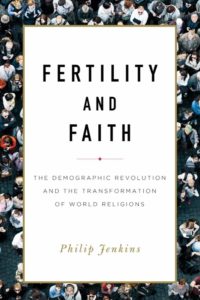
While thinking about how these amorphous religious movements have replaced organized cults, I was intrigued to read one of my favorite religion scholars, Philip Jenkins, on why we don’t see the kinds of cults we once did. His argument is that cults thrive on spiritual enthusiasms that bleed out onto the margins. “However much conservative religious critics might dislike this association, the cult boom was in some ways a gauge of the nation’s thriving spiritual vigor, and the loss of fringe sects is a disturbing sign of secular trends in progress.”
This book is not about such sects, though it does note the same sorts of moves away from institutions and structures in the religious margins as in the mainstream, resonant with both the work of Burton and Levin mentioned above. The primary argument of the book is about the interplay between demographic trends, replacement rates, and the rise of the “Nones.”
“Many religious congregations already find themselves dominated by the elderly, with few or no children or young families,” Jenkins argues. “Such communities face little chance of growing, although the structures of denominations commonly mean that they will survive in some form.”
This is not a Thanos-snap of sudden death, but it’s also not a peaceful slipping away: “By mid-century, the heart-rending politics of church closures to due to congregations ‘aging out’ will be a critical and deeply divisive theme in denominational affairs.”
Moreover, Jenkins is, in my view, completely right about two of the most prominent drivers of secularization: the appropriation of religion for political ideology or racial grievance and the horrors of the sexual abuse and other scandals.
“When a 2018 study asked ‘nothing in particulars’ why they rejected religious affiliation, 47 percent disliked the positions churches took on social or political issues, and 31 percent disliked religious leaders,” Jenkins notes. “Only 21 percent denied a belief in God. I suspect that as future surveys track the numbers of Nones, we will see a steep upswing during and following that traumatic election year of 2016. How could we not?”
But, as always with Jenkins, his sobering data and analysis do not end in handwringing woe: “Religious institutions will be transformed by demographic changes, and their success and continued existence will depend on how far they can adapt to a radially changed world,” he writes. “Some traditions, some denominations, will decline in the process, and some might fail altogether. But that is altogether different from forecasting the end of religion as such. Even when formal institutions are in crisis or decline, ample signs of religious sentiment or enthusiasm remained undimmed.”
This reading might not be pleasant for those who would like reassurances that the world is just a revival campaign or an election away from being back the way it once was. But it’s the sort of study those of us who care about the gospel and the mission should take seriously and with which we should grapple. We should do so with gravity, but not with despair.
Michael Card, The Nazarene: Forty Devotions on the Lyrical Life of Jesus (InterVarsity)

I’ve written elsewhere how formative the music of Michael Card was for me, from middle school on up until the present moment. Now, he’s a friend, and one of the regrets of COVID is not getting to have coffee with him. This little book, like his lyrics, moves me to think and re-think, and to try to “live this mystery” better. The book is built around each of the gospels, in conversation with Card’s extensive lyrical library on the life of Jesus.
One sample of the insights in this book is Mike’s discussion of the abrupt ending of Mark, in which the text concludes with “the women afraid, standing outside the empty tomb, perplexed, amazed, and wordless.” This sometimes disturbs Bible students when they first encounter it. Why did Mark stop there and not continue on, as the other Gospel writers do, to the encounters the risen Christ had with his followers, to the ascension, and all the rest?
Card does not see this as “missing,” but as an intentional means of Mark the Gospel-writer communicating his message:
“The literary mastery of this ending is that it leaves us standing with the women outside the vacant tomb as well. We are forced to cope with the situation exactly as they were. We are forced to believe without seeing the body. We are compelled to trust Jesus’ promise without any proof. That was Mark’s contribution to the early church, to draw them into the drama of the moment as no other Gospel writer in the decades to follow would do. It was risky and brilliant, and he needs to deeply appreciated for the literary genius that he was.”
The book does what it promises: shows us how the Gospels fit our lives into the lyrics of the life of Jesus himself.
Tod Bolsinger, Tempered Resilience: How Leaders Are Formed in the Crucible of Change (InterVarsity)
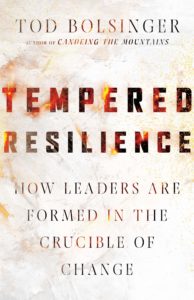
Here’s something I’ve never done before—putting a book on this list that I haven’t finished reading yet. As a matter of fact, I am only two chapters in. But I can’t help myself. The first two chapters have been so good, so life-enriching, that they alone are worth more than the price of the book, and would be on this list even if they were on their own.
The book argues that a leader (I would argue this would apply to almost everyone in some context or another of life) is challenged sometimes by a failure of nerve and sometimes by a failure of heart. Failure of nerve is caving in to the status quo out of fear whereas failure of heart is the numbness that comes from despair and cynicism.
The answer, for Bolsinger, is “tempering” a process of reflection, relationships, and practices that lead not to invulnerability but to resilience. “Resilience is not about becoming smarter or tougher; it’s about becoming stronger and more flexible,” he writes. “It’s about becoming tempered.”
Much of this work, so far, resonates with the idea of “anti-fragility” that Nassim Taleb writes about in his work, but does so with a biblical framework and the authority of one who has experienced the joys and buffering of Christian leadership.
Now, again, maybe the book veers off from here into something heretical and enraging, such as that The Magician’s Nephew should be read first in the Chronicles of Narnia or some such thing. But I doubt it. I think I can see the direction this book is going, and I expect to be as helped by the last of it as I was by the first.

